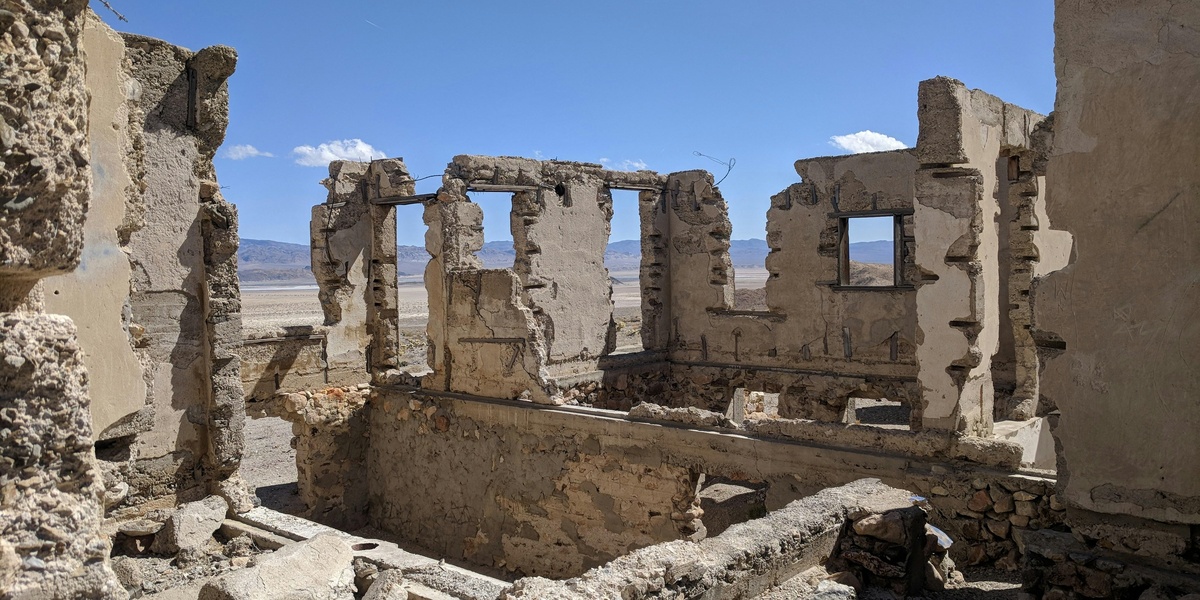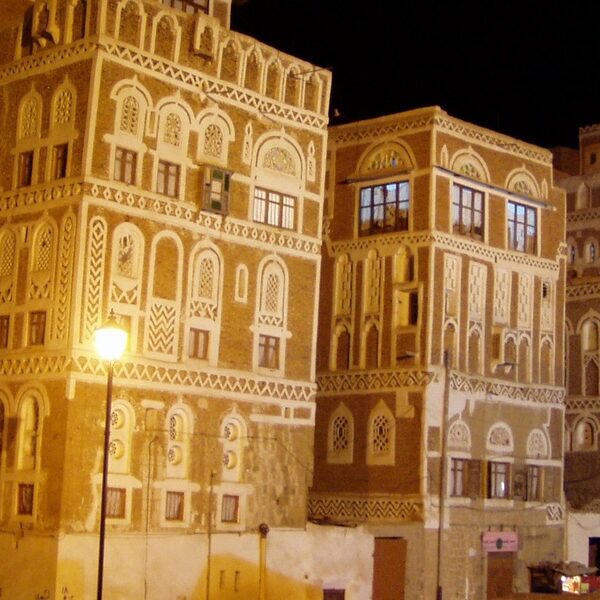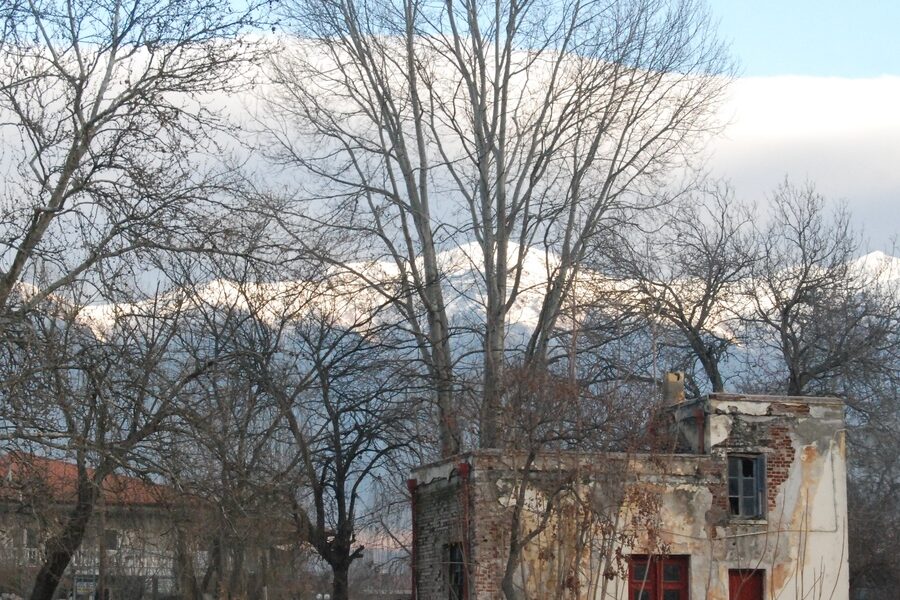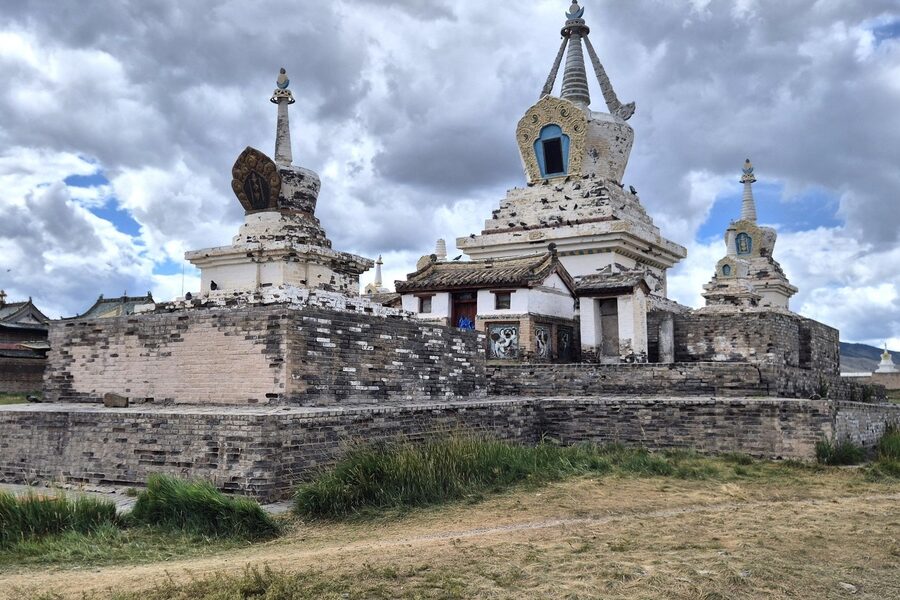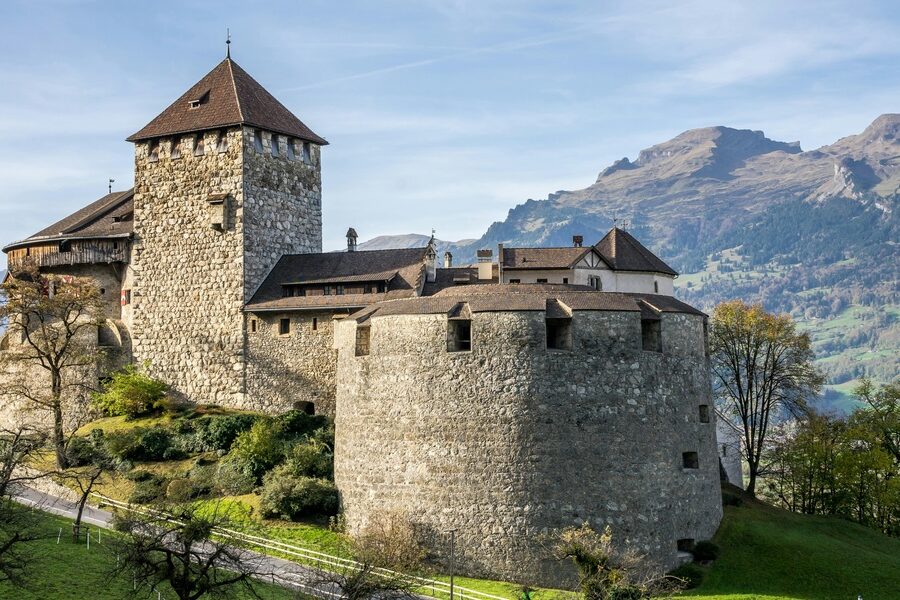Nevada’s vast, often stark landscape is a canvas for tales of boom and bust. Its history is deeply intertwined with the quest for minerals, particularly silver and gold, which drew countless hopefuls to remote corners. When mines played out, or metals became too difficult to extract, entire communities were often abandoned almost overnight. These forgotten settlements now stand as fascinating historical markers, telling stories of ambition, hardship, and the relentless march of time.
This list compiles an exact 50 of these incredible historical sites, offering a comprehensive look at Ghost Towns in Nevada. Ranging from the once-thriving mining hub of Aurora to the remote remnants of Wonder, each entry provides key information such as its County, Peak Population during its heyday, and its Primary Industry. You’ll find a detailed exploration of each of these intriguing locations below, inviting you to discover the silent echoes of the past.
What makes Nevada home to so many ghost towns?
Nevada’s unique abundance of ghost towns stems from its mining frontier history. The discovery of valuable minerals like silver and gold led to rapid boom-and-bust cycles. Towns sprang up quickly around successful mines, but when ore ran out or prices dropped, communities were often abandoned just as swiftly. Unlike agricultural towns that might decline slowly, mining towns could become desolate overnight, leaving structures and artifacts that now stand as these fascinating historical sites.
Are these ghost towns safe or legal to visit?
Many of Nevada’s ghost towns are on public land and accessible, but research individual locations beforehand. Some are private, while others, like Berlin-Ichthyosaur State Park, are protected. Always prioritize safety: be aware of crumbling structures, open mine shafts, and wildlife. It’s vital to practice “leave no trace” principles, respecting artifacts and structures by not disturbing or removing anything, ensuring these unique sites remain preserved for future generations.
Ghost Towns in Nevada
| Town Name | County | Peak Population | Primary Industry |
|---|---|---|---|
| Rhyolite | Nye | 8,000 | Gold Mining |
| Belmont | Nye | 2,000 | Silver Mining |
| St. Thomas | Clark | 500 | Farming |
| Berlin | Nye | 300 | Gold & Silver Mining |
| Metropolis | Elko | 700 | Farming |
| Hamilton | White Pine | 10,000 | Silver Mining |
| Aurora | Mineral | 5,000 | Gold Mining |
| Candelaria | Mineral | 1,500 | Silver Mining |
| Delamar | Lincoln | 3,000 | Gold Mining |
| Gold Point | Esmeralda | 150 | Gold Mining |
| Tybo | Nye | 1,000 | Lead & Silver Mining |
| Unionville | Pershing | 800 | Silver Mining |
| Ione | Nye | 500 | Silver Mining |
| Seven Troughs | Pershing | 500 | Gold Mining |
| Rawhide | Mineral | 7,000 | Gold Mining |
| Wonder | Churchill | 2,000 | Silver & Gold Mining |
| Fairview | Churchill | 1,000 | Silver & Gold Mining |
| Blair | Esmeralda | 700 | Silver Mining |
| Marietta | Mineral | 200 | Borax Mining |
| Belleville | Mineral | 800 | Ore Milling |
| Palmetto | Esmeralda | 200 | Silver Mining |
| Poeville | Washoe | 300 | Gold & Silver Mining |
| Osceola | White Pine | 1,500 | Placer Gold Mining |
| Cherry Creek | White Pine | 700 | Gold & Silver Mining |
| Ward | White Pine | 500 | Silver Mining |
| Bristol Wells | Lincoln | 500 | Silver & Lead Mining |
| Tuscarora | Elko | 1,000 | Gold & Silver Mining |
| Cornucopia | Elko | 1,200 | Silver Mining |
| Grantsville | Nye | 1,000 | Silver Mining |
| Morey | Nye | 500 | Silver Mining |
| Pioneer | Nye | 2,500 | Gold Mining |
| Carrara | Nye | 100 | Marble Quarrying |
| Bonnie Claire | Nye | 100 | Ore Milling |
| Pine Grove | Lyon | 600 | Gold Mining |
| Como | Lyon | 500 | Gold & Silver Mining |
| Star City | Pershing | 1,200 | Silver Mining |
| Rochester | Pershing | 2,000 | Silver Mining |
| Midas | Elko | 2,000 | Gold Mining |
| Broken Hills | Mineral | 100 | Silver & Lead Mining |
| Klondyke | Esmeralda | 100 | Gold & Turquoise Mining |
| Lida | Esmeralda | 200 | Gold & Silver Mining |
| Ruby Hill | Eureka | 1,000 | Lead & Silver Mining |
| Cortez | Lander | 400 | Silver Mining |
| National | Humboldt | 400 | Gold Mining |
| Reveille | Nye | 300 | Silver & Lead Mining |
| Silverbow | Nye | 250 | Gold & Silver Mining |
| Logan City | Lincoln | 300 | Silver Mining |
| Taylor | White Pine | 1,000 | Silver Mining |
| Dun Glen | Pershing | 200 | Gold & Silver Mining |
| Johnnie | Nye | 200 | Gold Mining |
Images and Descriptions
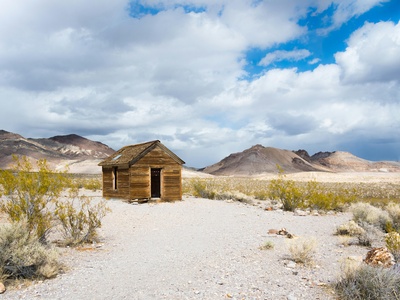
Rhyolite
Once a thriving metropolis, Rhyolite is now one of Nevada’s most famous and accessible ghost towns. Visitors can see the impressive ruins of a three-story bank, a train depot, and a unique house made of bottles.
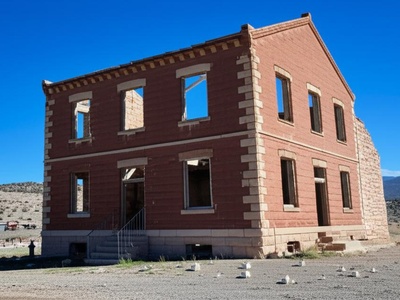
Belmont
This former Nye County seat boasts some of the state’s most majestic ruins, including a magnificent two-story brick courthouse. Numerous stone buildings and a historic cemetery make it a top destination for explorers.
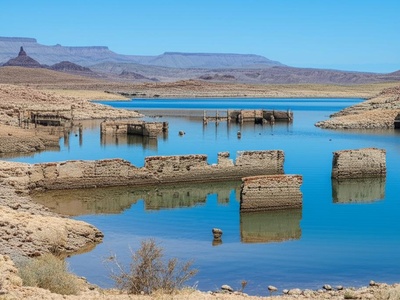
St. Thomas
A Mormon farming community intentionally flooded by the creation of Lake Mead in the 1930s. During low water levels, the town’s haunting stone and concrete foundations re-emerge from the depths of the lake.
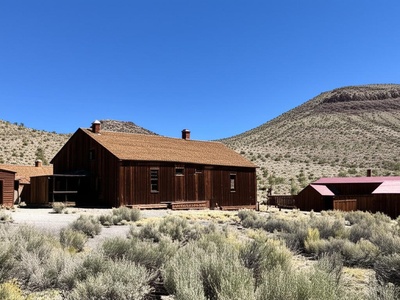
Berlin
Perfectly preserved as part of a state park, Berlin offers a rare glimpse into daily life in a turn-of-the-century mining camp. The park also features massive Ichthyosaur fossils, adding a unique prehistoric twist.
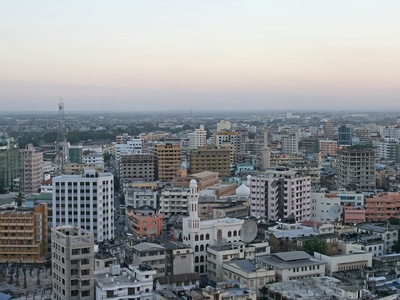
Metropolis
A failed agricultural dream, Metropolis was defeated by drought and jackrabbits. The most iconic remnants are the haunting arch of the former schoolhouse and the concrete shell of a grand hotel.
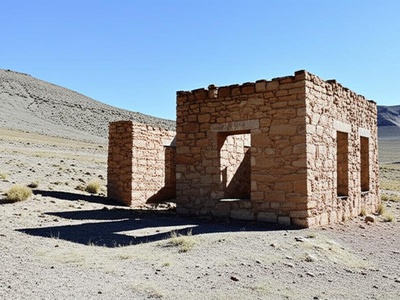
Hamilton
A high-altitude boomtown that quickly went bust. At nearly 11,000 feet, its stone ruins, including the Wells Fargo building, endure harsh winters and offer a glimpse into the Treasure Hill silver rush.
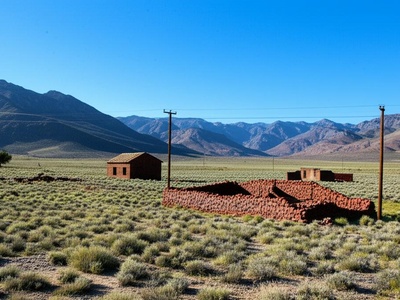
Aurora
A town so confused about its location it was once the county seat in both California and Nevada simultaneously. Today, only scattered brick ruins, foundations, and a large cemetery remain of this major camp.
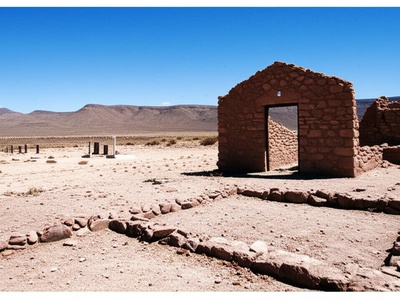
Candelaria
Known for its harsh, dry conditions, Candelaria was a tough place to live. Today, its extensive stone ruins and lonely cemetery tell the story of a town that wrestled silver from an unforgiving landscape.
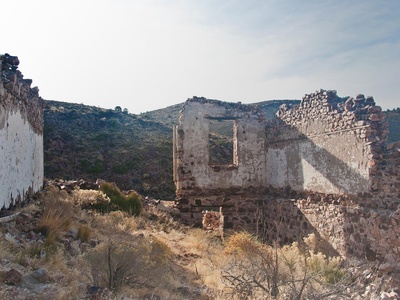
Delamar
Nicknamed “The Widowmaker” because the gold-rich dust in its mines caused fatal lung disease. The townsite is now a sprawling collection of impressive stone ruins and a cemetery full of young miners.
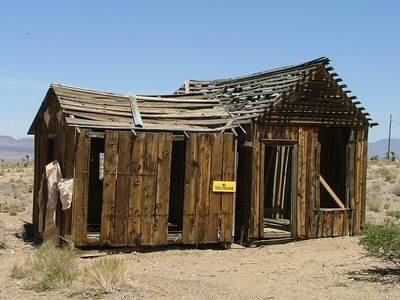
Gold Point
A classic early 20th-century gold camp where a few residents preserve the remaining buildings as a living history museum. It’s one of the most complete and atmospheric ghost towns you can actually stay in.
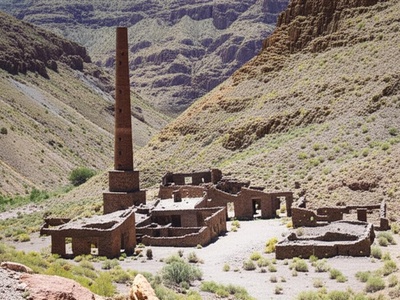
Tybo
Dominated by a towering stone smelter stack, Tybo’s ruins are scattered throughout a remote canyon. Visitors can explore the remains of stone buildings, a schoolhouse, and the old smelter works.
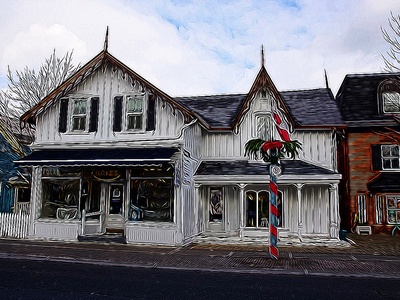
Unionville
Mark Twain briefly tried his hand at prospecting here, famously living in a small cabin. While a few people still live here, its historic school, church, and many ruins give it a classic ghost town feel.
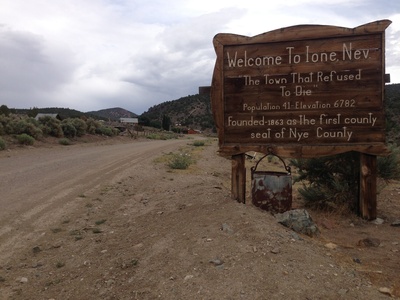
Ione
One of Nye County’s earliest county seats, Ione is a quiet and remote ghost town. A few remaining wooden buildings, a stone blacksmith shop, and an old jail offer a glimpse into its pioneer past.
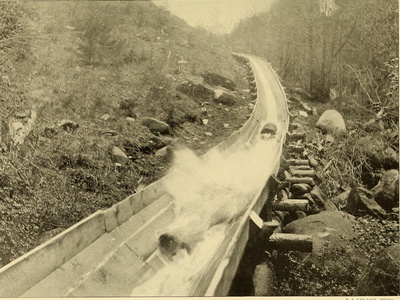
Seven Troughs
Nestled in a rugged canyon, this town’s name comes from seven water troughs built by a local rancher. Only scattered building foundations and rusting mining equipment remain, accessible by 4WD vehicles only.
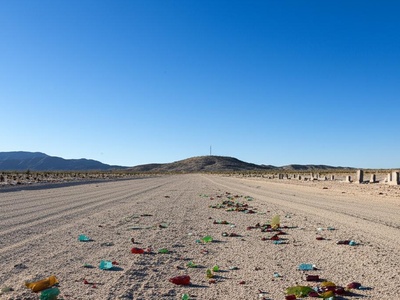
Rawhide
A town born of sensational advertising that boomed and busted in just a few years. After a major fire, little remains but a grid of streets, a unique cemetery on a hill, and countless pieces of colored glass.
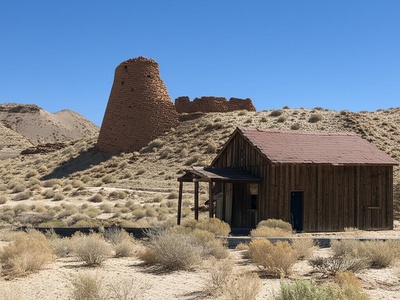
Wonder
The name reflected the rich ore discovered here, but the wonder didn’t last long. The impressive ruins of a massive stamp mill stand sentinel over the desert, along with a few collapsing wooden buildings.
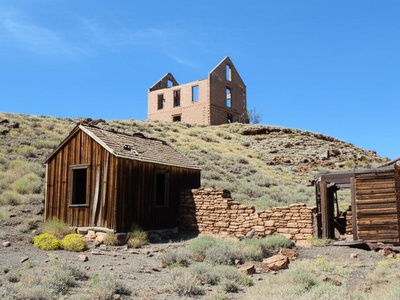
Fairview
Dominated by the massive Fairview Mill ruins on a nearby hill, this ghost town offers stunning views. A few hardy wooden structures and numerous stone foundations are scattered across the remote landscape.
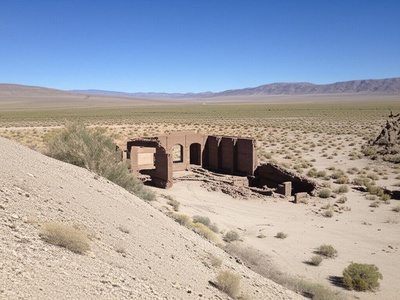
Blair
This town existed solely to serve one of Nevada’s largest silver mills. The mill is gone, but its massive concrete foundation, covering several acres, creates a truly unique and monumental ruin.
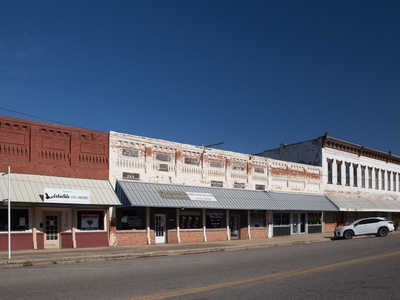
Marietta
Unlike the gold and silver camps, Marietta was built on borax, the “white gold” of the desert. Several photogenic adobe and stone ruins remain from one of Nevada’s earliest and most important borax operations.
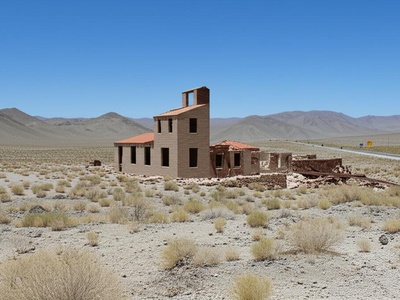
Belleville
A tough mill town that processed ore from nearby Candelaria. Today, visitors can find substantial ruins of the mill, smelter, and several stone buildings just off the main highway.
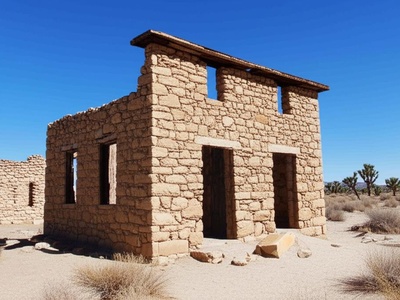
Palmetto
Set within a beautiful Joshua tree forest, Palmetto is a quiet but rewarding ghost town. Its main attraction is a well-preserved two-story stone store, along with other scattered ruins from its 1860s boom.
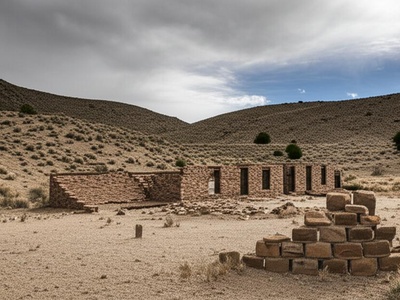
Poeville
One of the closest ghost towns to Reno, Poeville was a rowdy camp in the 1860s. Today, only stone foundations, mining pits, and marked graves remain as evidence of its brief, chaotic existence.
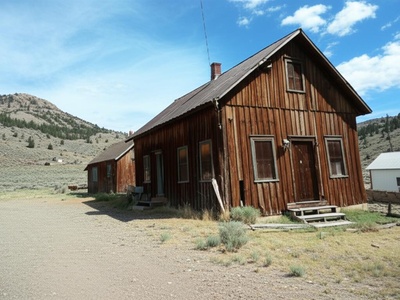
Osceola
A long-lived placer gold camp known for huge hydraulic mining scars on the landscape. A few original buildings survive among a handful of modern homes, giving it a semi-ghost town atmosphere.
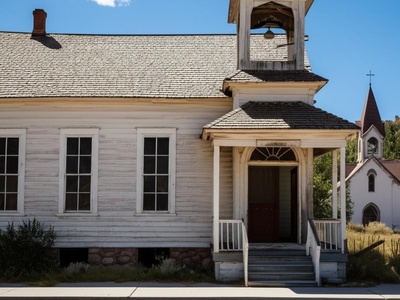
Cherry Creek
With only a few residents left, Cherry Creek is a treasure trove of 19th-century buildings. An original schoolhouse, church, and numerous homes stand in a state of arrested decay, offering a walk through the past.
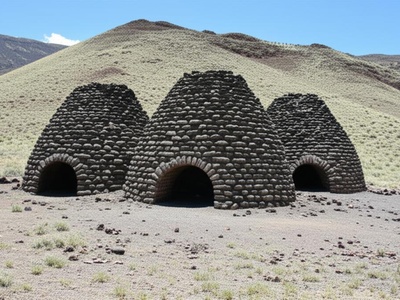
Ward
While the townsite has some stone ruins, the main attraction is the nearby Ward Charcoal Ovens State Historic Park. These six beehive-shaped ovens are among the best-preserved examples in the American West.
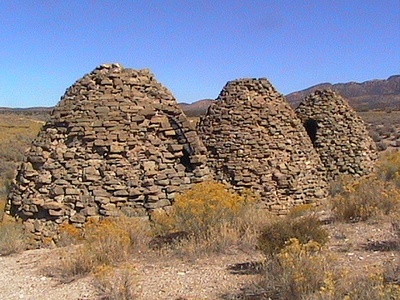
Bristol Wells
A must-see for photographers, Bristol Wells features a prominent smelter stack and the skeletal remains of numerous stone buildings. The site tells the story of the difficult process of smelting ore in the remote desert.
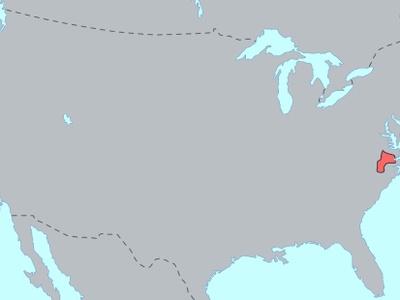
Tuscarora
Once a major mining center, Tuscarora is now a semi-ghost town with a small community of artists. Visitors can see historic homes, a two-story school, and pottery kilns built into the hillsides.
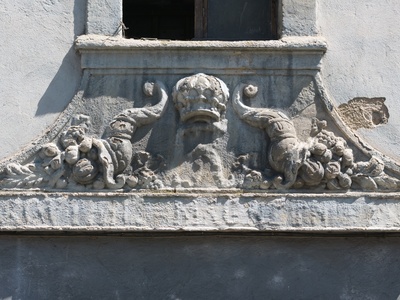
Cornucopia
This high-altitude camp had a brief but intense boom in the 1870s. Harsh winters have taken their toll, but stone ruins of a bank and other buildings, plus a lonely cemetery, can still be found.
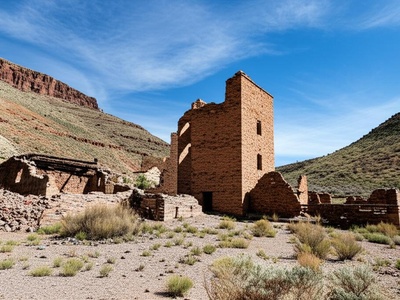
Grantsville
Hidden away in a scenic canyon, Grantsville is an impressive site. The massive stone walls of a 20-stamp mill dominate the town, which also features the ruins of several other stone buildings.

Morey
Located in a very remote and beautiful part of central Nevada, Morey was also known for producing high-quality turquoise. Today, scattered stone ruins and mining remnants are all that is left.
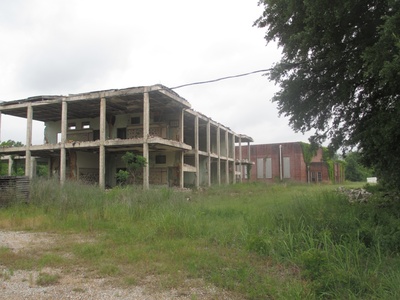
Pioneer
A satellite town to the more famous Rhyolite, Pioneer had its own brief, wild boom. After a fire and the decline of local mines, it vanished, leaving behind a few stone walls and scattered foundations.
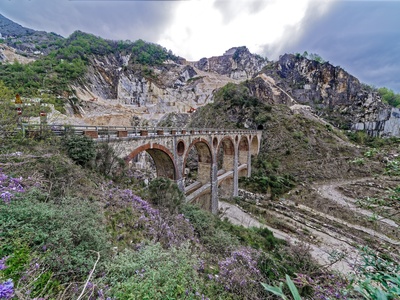
Carrara
This town’s industry was not precious metal but precious stone. Built to quarry a local marble deposit, its ruins are made of concrete, including a massive hotel foundation, visible right off the highway.
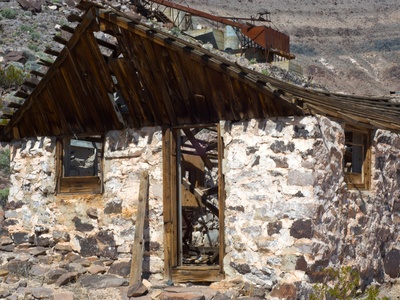
Bonnie Claire
A lonely outpost in the vast Sarcobatus Flat, Bonnie Claire served as a mill and railroad stop for area mines. The ruins of a large stamp mill and a few small shacks are all that remain.
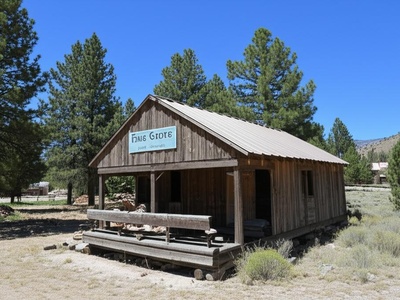
Pine Grove
Centered around a grove of piñon pines, this town was split into a rough saloon area and a more civilized upper town. Today, scattered stone ruins, a small cemetery, and mill foundations remain.
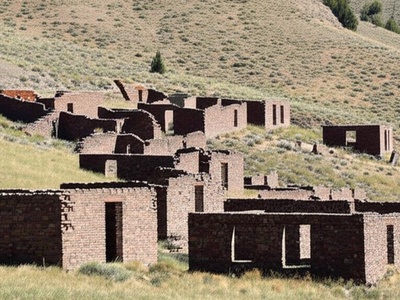
Como
Once a promising camp visited by Mark Twain, Como is now a sprawling and confusing field of ruins. The stone walls of mills, saloons, and homes are spread across a hillside, inviting careful exploration.
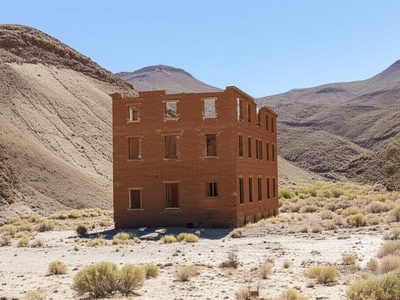
Star City
Once one of Humboldt County’s largest towns, Star City has almost completely vanished. Its stunning primary ruin is a large, multi-story brick building, thought to be a hotel, standing alone in a remote canyon.
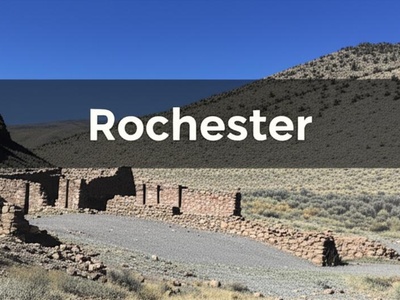
Rochester
Comprised of Upper, Lower, and East Rochester, this district was a major silver producer. Mill foundations and stone ruins dot the landscape of Rochester Canyon, evidence of its once-thriving industry.
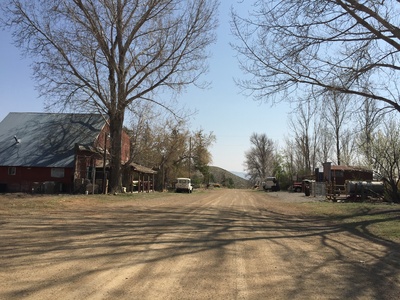
Midas
Originally named Gold Circle, this town sits in a remote northern valley. While a few people still live here and modern mining is active nearby, its core street of historic wooden buildings gives it an authentic ghost town feel.
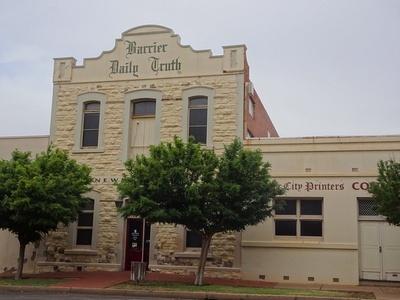
Broken Hills
A classic 1920s boom-and-bust camp. Several tin and wood buildings, including a boarding house and a garage, survive in a state of arrested decay, offering a look at a later period of Nevada mining.
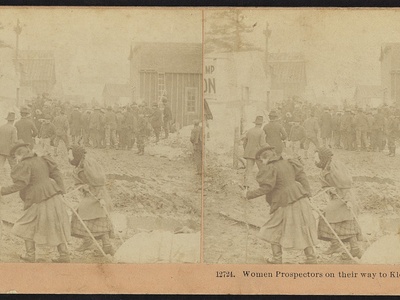
Klondyke
A small, remote camp that experienced several small booms. A few weathered wooden buildings, old car bodies, and mining headframes remain, painting a picture of a hardscrabble desert existence.

Lida
One of the oldest districts in Esmeralda County, Lida is now a semi-ghost town. It features a mix of a few modern homes, many abandoned historic buildings, and a classic pioneer cemetery.
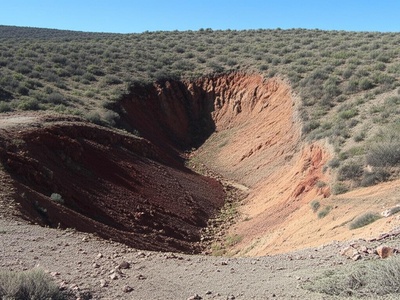
Ruby Hill
This was the residential camp for the massive mines that supported the nearby living town of Eureka. Extensive ruins of mine offices, hoists, and stone cabins cover the hill above the massive open-pit mine.
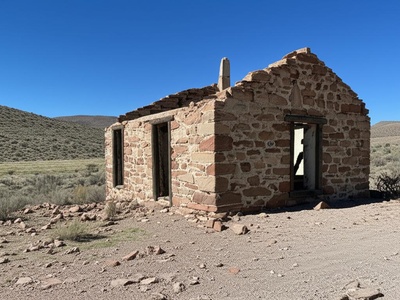
Cortez
One of Nevada’s oldest silver mining districts, dating to the 1860s. Historic Cortez consists of picturesque stone ruins of homes and a mill. The site is separate from the massive modern Cortez gold mine nearby.

National
Home to one of Nevada’s richest but shortest-lived gold strikes. Located in a steep, narrow canyon, very little remains of the town itself due to floods and harsh winters, but the story is legendary.
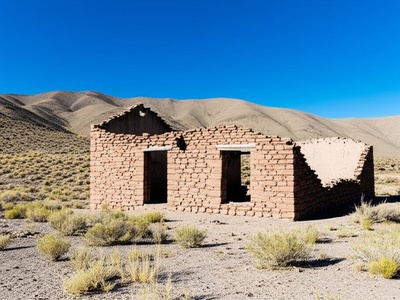
Reveille
Extremely isolated in the Reveille Range, this town is a reward for adventurous explorers. Visitors who make the difficult journey will find impressive stone building ruins and the remains of a large mill.
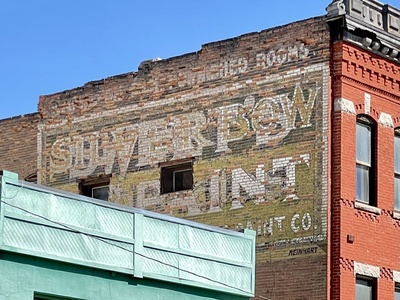
Silverbow
Another very remote camp for dedicated ghost town hunters. Its isolation has helped preserve several wood-frame buildings, including a relatively intact boarding house, offering a rare glimpse of wooden ghost town architecture.
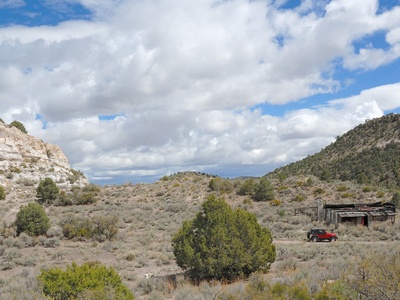
Logan City
Hidden in the shadow of Mount Irish, the most impressive feature of this ghost town is the massive, cathedral-like stone walls of the Logan Mill. Some smaller building ruins can also be found.
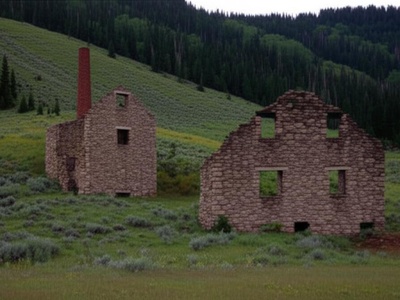
Taylor
A remote camp east of Ely that required its own mill to process ore. The ruins of the large mill are impressive, and a few stone buildings, including a powder house, are still standing.
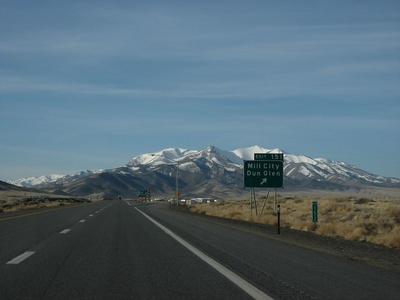
Dun Glen
Also known as Chafey, this was a roaring camp in the 1860s that boomed again in the early 1900s. Only scattered stone ruins and a cemetery mark the spot of this once-lively town.
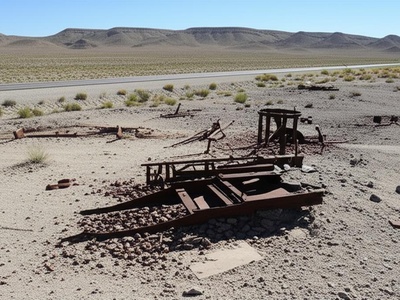
Johnnie
Located near the modern highway to Pahrump, Johnnie is remembered for a 16-year labor strike at its main mine. Very little remains today besides the mine site itself and a few foundations.

